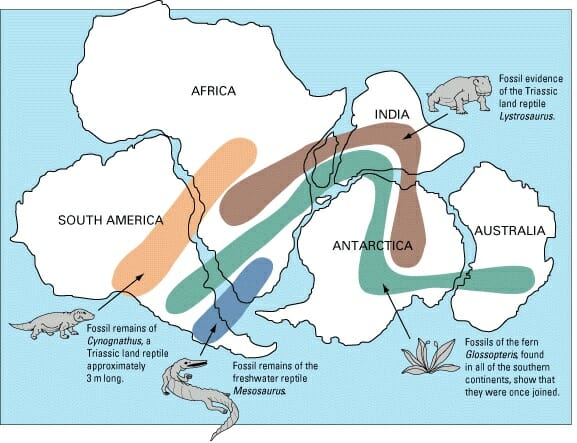Bio: Fossil Evidence for Evolution
Theory: A well-substantiated explanation of an aspect of the natural world that can incorporate laws, hypotheses, and facts. To substantiate a theory, it requires evidence.
Fossils can be formed in many ways and may be considered trace or body fossils.
Trace Fossils are fossils of footprints, trails, burrows, feces, or any other trace of an animal rather than of the animal itself
Body Fossils are the remains of plants, animals, and microorganisms preserved in a geologic context and are what most people think of when they think of a fossil
Things we learn from body fossils (preserved bones, teeth, shells, etc)
What the organism looked like (size, shape, and structure)
How species have changed over time (evidence for evolution)
What the organism ate (from teeth shape and stomach contents)
Relationships between species (comparing fossils to modern organisms)
Things we learn from trace fossils (footprints, burrows, feces, etc)
How the organism moved (walking, running, or slithering)
Where and how it lived (habitat and behaviors)
Social behavior (whether it lived alone or in groups)
Diet and digestion (from fossilized feces, called coprolites)
Both types of fossils help scientists reconstruct past ecosystems and understand how life evolved over millions of years.
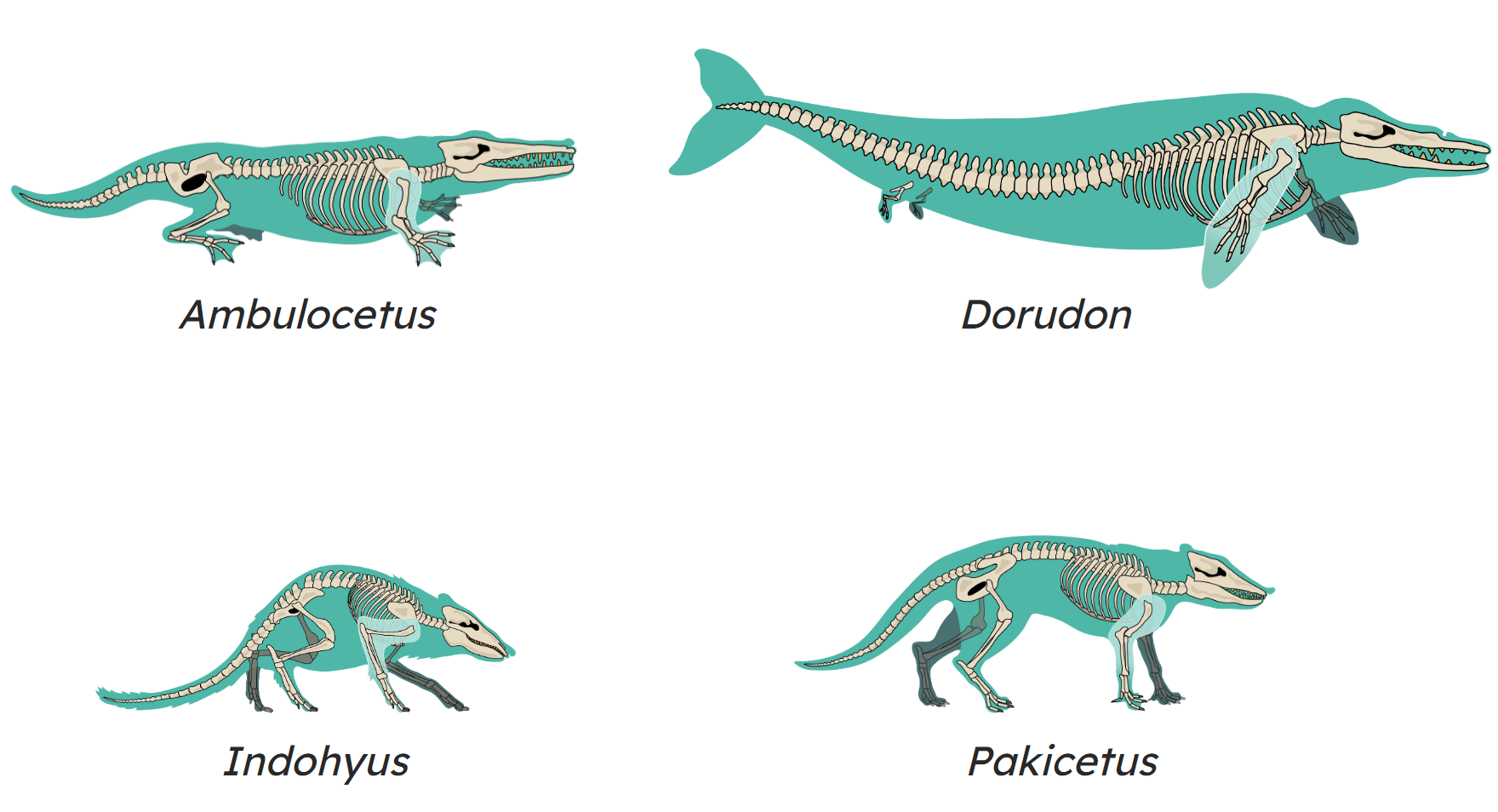
Fossil Dating
The ability to determine the age of a fossil is important to understanding its role in evolution
It is relatively easy to determine the relative age of a fossil (which is older and which is younger), while the absolute age (in years) is much more complex to determine
The absolute age of a fossil is determined based on the rate of decomposition of an isotope incorporated into the organism while it was alive or environmental cues (like volcanic ash)
Based on how much of the isotope has decayed and how fast that rate of decay occurs, the age in years can be estimated
Absolute age can be determined with carbon dating, carbon is incorporated into living things during their lifetime and then after they die it slowly decomposes into N-14
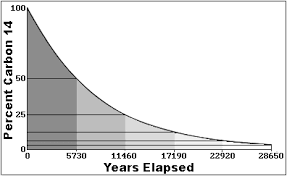
The number of years it takes for half of the C-14 to decay into N-14 is called the half life and it is 5730 years, so we determine how many half-lives have gone by and then multiply that number by 5730 to determine the age of the fossil
Other Types of Evidence:
Homologous Evidence:
Homologous structures are body parts that have a similar structure but different functions in different species. This suggests they evolved from a common ancestor.
Homologous structures show evolutionary relationships. Even though these structures may be used differently. their similarities in bone structure, layout, or development indicate that species are related through evolution.
Homologous structures as evidence for evolution. The presence of these similar structures in different species supports the idea of evolution by common descent, showing how species have changed over time while retaining traits from their ancestors.
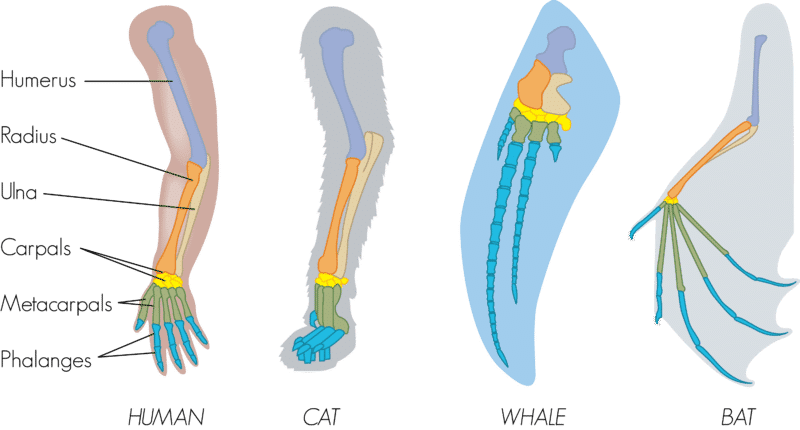
Embryonic evidence:
An embryo is an early stage of development in animals and humans, starting after fertilization and before birth or hatching. During this stage, basic body structures begin to form.
Many animals, including humans, fish, birds, and reptiles, have similar-looking embryos in early development. These similarities suggest that they share a common ancestor.
Scientists study how embryos of different species develop and compare their structures. The more similarities they find, the more closely related the species are, supporting the theory of evolution by common descent.

Genetic Evidence:
Genetics is the study of how traits are inherited from one generation to the next through DNA, which carries instructions for building and maintaining living organisms.
All living things share DNA as their genetic code, and closely related species have more similar DNA sequences, proving they evolved from a common ancestor.
Over time, mutations create new traits. If these traits help a species survive, they can be passed down, leading to evolution by natural selection. Scientists can track these DNA changes to understand how species have evolved.
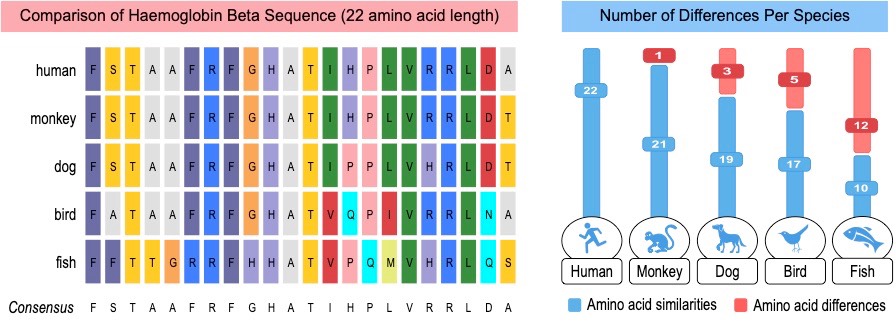
Breeding evidence:
Breeding is the process of selecting and mating organisms to produce offspring with desired traits.
Humans have bred plants and animals for specific traits, like larger fruits or dogs with different sizes and temperaments. This shows how species can change over generations, just like natural selection does in the wild.
Selective breeding has led to major changes in species within just a few generations (eg, wild wolves becoming domesticated dogs). This proves that species are not fixed and can evolve, supporting Darwin’s theory of evolution.
These physical changes take much longer naturally, as the selection pressure in artificial selection is much stronger.

Molecular evidence:
Biomolecules are molecules essential for life, including proteins, carbohydrates, lipids, and nucleic acids. Proteins, made of chains of amino acids, play a key role in structure and function in all living organisms.
Organisms that share a common ancestor often have similar proteins with only slight differences in their amino acid sequences. The more similar the sequence, the more closely related the species are.
Scientists compare the amino acid sequences of proteins (such as cytochrome c, a protein used in energy production) across different species. The fact that closely related species have fewer differences in their amino acid sequences supports the theory of evolution by common descent.

Vestigial evidence:
Vestigial structures are body parts that have lost their original function over time due to evolution. They may be reduced in size or no longer useful to the organism.
These structures suggest that species have changed over generations and no longer need certain traits that their ancestors once used for survival.
Human wisdom teeth were useful for our ancestors, who are rough, raw plants and had larger jaws. Today, most people have smaller jaws and don’t need wisdom teeth, showing how humans have evolved over time.
:max_bytes(150000):strip_icc()/about-vestigial-structures-1224771_FINAL-73dc5d5cb75b4ccdb04ef93fff6f55de.png)
Biogeographical evidence:
Biogeography is the study of how and why different species are distributed across the Earth. It looks at where plants and animals live and how they got there.
Similar species are often found in neighboring regions or on islands near continents, suggesting they evolved from a common ancestor but adapted to different environments.
Fossil evidence shows that ancient species lived in different places before continents shifted, and today, closely related species are still found in similar regions, proving that evolution has shaped life over time.
